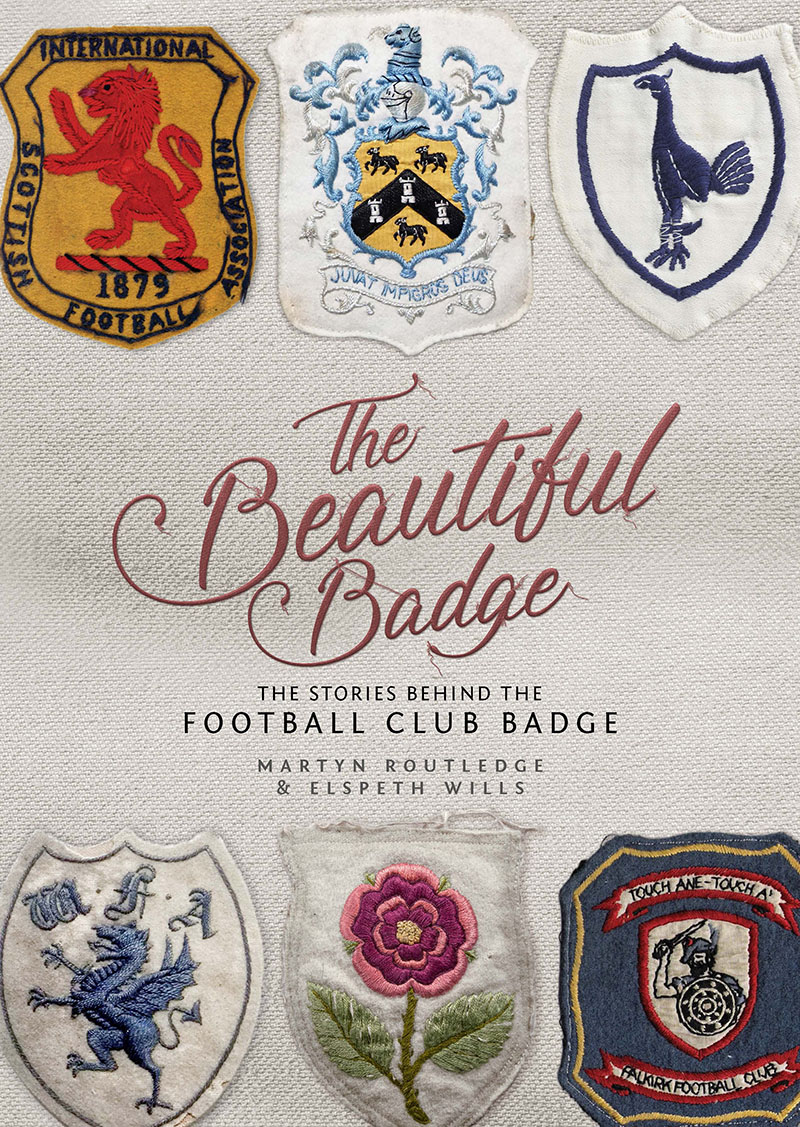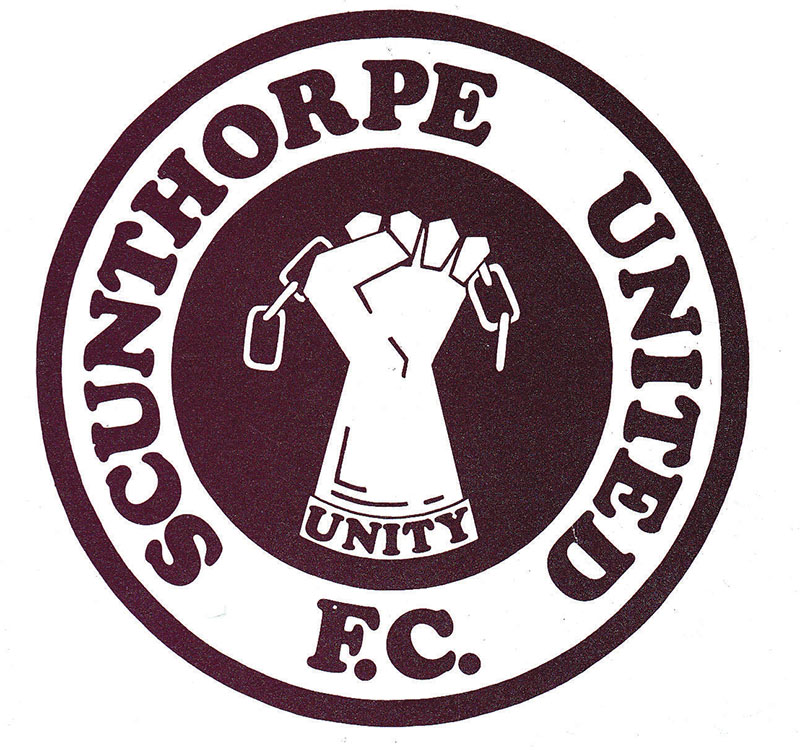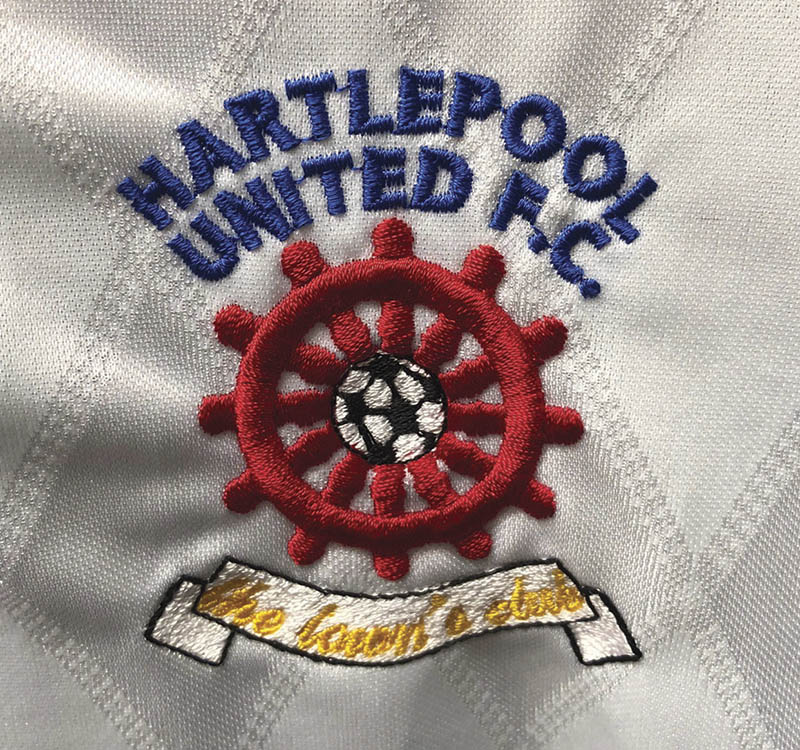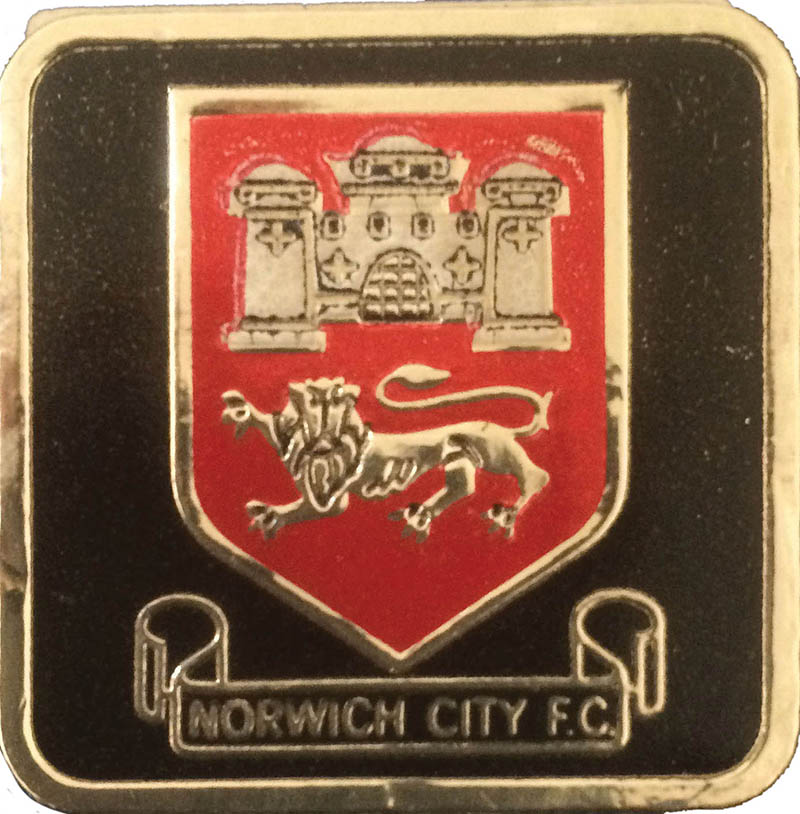
From a Bradford fan drawing Scunthorpe’s new badge on the way home from a match to Birmingham’s gas-engineer-design effort, it’s surprising that so many club badges were designed by supporters, as this extract from The Beautiful Badge explains
4 December ~ Running a competition in the local newspaper or through the club programme was a cheap and effective way of having a badge designed. FC Barcelona held the first competition as early as 1910.
When Birmingham wanted a new badge to protect against counterfeiters and celebrate their return to the First Division, a gas engineer produced the winning design.
Interested in art and design as a hobby, Michael Wood entered Birmingham’s Saturday “pink” newspaper competition in 1972. His design was a football and a globe inside a sash with the club’s name and date of foundation. The commercial manager commented: “It is forward looking and introduces the globe and the idea of European football which is what everyone at the Blues wants to see.” In 2015 the club launched a commemorative badge to mark 140 years in football, with an abstract motif of their initials. The fans gave it the thumbs down and next year Michael’s badge was back.
Tempted with the prize of a £10 voucher for the club shop, the winner of the competition to design a badge for Scunthorpe United was far from a fan. John Dewhirst, accountant, Bradford City historian and co-founder of the City Gent fanzine, takes up the story. “The programme for our game in 1981 advertised a competition for a new club crest. I literally sketched it on a sandwich wrapper while on the supporters’ coach back to Bradford. I only realised that I’d won when I saw the 1982 Rothmans Yearbook. I visited Scunthorpe to claim my prize and shame them for not getting in touch. I was given a letter confirming my success and a couple of cheap metal badges featuring the design. It could have been worse; I could have been given a season ticket… It speaks volumes about the amateurism of how clubs managed their brands in those days.”
What John came up with was known as the “Unity fist”, incorporating the chain of the previous badge in a clenched gauntlet with the motto “unity”. The club then looked for a more family friendly approach. Back came the town coat of arms as the borough council agreed to become their first sponsor. When the council pulled out in the early 1990s, the club resorted to another competition. This time the winner was a local graphic design student whose badge showed a fist holding an iron girder with the word “Iron” written on it.

When local businessman Harold Hornsey rescued Hartlepool United in 1994, he wanted to make a fresh start including a new logo designed by the fans. He asked the Hartlepool Mail to run a competition which elicited over 300 drawings and paintings. The mayor made the final choice, the winning entry being that of local graphic designer Glyn Jones, who was given £100.
Two decades later, the intricate badge was proving expensive and difficult to replicate both in print and in smaller sizes. There was confusion and disagreement over the prominence of the ship’s wheel. The club researched their history and consulted their fanbase. Two clear themes emerged: a desire to return to the pun of a hart and a pool and the inclusion of the date of foundation, 1908.
Following a supporter online vote, the club launched the badge for 2017‑18. Careful choice of colour and typeface has even allowed the badge to nod to the town’s maritime past and the famous legend of the monkey which features strongly in merchandising.

Over 40 years later, Southampton’s badge remains largely true to the original design, the result of a competition. In 1974 local graphic designer and Saints fan Rolland Parris delivered a football-orientated take on a coat of arms. The halo refers to the nickname Saints; the scarf represents the fans and the team colours; the tree stands for the nearby New Forest; the water for the city’s maritime tradition and the white rose, the city’s symbol. The design has been tweaked since to meet copyright requirements but has stood the test of time.
In 1971 the Eastern Evening News in Norwich decided to run a competition for a new badge. Controversy had already arisen over an Esso petrol promotion, which featured the Norwich coat of arms, which once had appeared on club blazers, rather than the traditional canary on a branch that adorned players’ shirts. Out of over 400 entries, architect Andrew Anderson won, possibly helped by his own admission that one of the judges was his former art teacher at school. His solution was simple – a canary, a football and elements of the city coat of arms in the top-left corner. He recalled: “As a prize I was given ten pounds and two directors’ box tickets for a game played in the rain that City lost. I was also asked to relinquish the copyright. I try not to think of the millions I signed away.”
In 2007 the club set up a brand identity working group: on the agenda was the possibility of a new badge. Anderson’s response was: “I would gladly give the ten pounds I won to anyone who could design a better one.” The money is unclaimed.

In 1973, Nottingham Forest held a competition for a new design after discovering that they could not copyright the town coat of arms. The then manager and the vice-chairman in 1957 had simply replaced the castle at the top of the town crest with the club’s initials. The local evening paper hosted the competition, recruiting two lecturers in art and design as advisers. The response was massive. There were 855 entries from as far away as Australia and Germany: one man submitted 27 designs.
One of the advisers won the competition and the badge has remained unchanged ever since. Expressing his admiration for its design, one advertising executive wrote in Campaign in 2000: “Above all, it’s quick and easy to draw in the bogs at the away end of any grounds you visit.” Martyn Routledge
The Beautiful Badge: The stories behind the football club badge by Martyn Routledge & Elspeth Wills is out now (Pitch Publishing, £25)
WSC readers can save £2 on the cover price at shop.wsc.co.uk
Follow @BeautifulBadge on Twitter